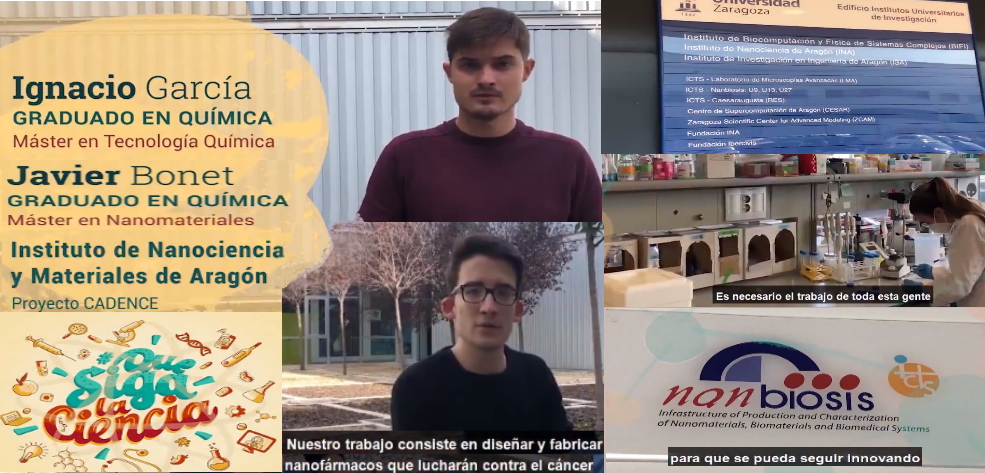Ignacio García and Javier Bonet present their work on the CADENCE project in a one-minute video
Ignacio García and Javier Bonet, researchers from the Nanoporous Films and Particles (NFP) group and Nanbiosis U9 Synthesis of Nanoparticles Unit of the CIBER-BBN and the Institute of Nanoscience and Materials Science at the University of Zaragoza have presented their work on the CADENCE project in a video of a minute of duration that has been submitted to the #QueSigalaCiencia scientific dissemination contest promoted by the CIBER-BBN.
#QueSigaLaCiencia is a campaign on social networks that wants to explain to society, from an optimistic perspective, the importance of research and the work carried out by the research staff of the CIBER. The call -associated with the campaign- has had a high participation of the groups, who have presented 69 videos from all the scientific areas of the center. Researchers took on the challenge of telling their research in one minute. The works presented in the #QueSigaLaCiencia call have the possibility of opting for the prize that the public will give through Twitter (highest number of likes).
Their research work in the project CADENCE consists of designing and manufacturing nanopharmaceuticals that will fight cancer, not only in a more effective way, but also in a more selective way , avoiding damaging healthy cells. “By striking the tumor with light, which, for example, comes from a laser, the particles created by these researchers are capable of creating toxic substances for the cancer cell and, in addition, eliminating essential nutrients for the tumor to continue its growth ·.
The work carried out in NANBIOSIS is recognized by these researchers as “fundamental to continue innovating, advancing and providing solutions to different problems”.
CADENCE is a European Project (Catalytic Dual-Function Devices Against Cancer) that aims for a breakthrough in cancer therapy by developing a new therapeutic concept. The central hypothesis is that a growing tumor can be treated as a special type of reactor in which reaction conditions can be tailored to achieve two objectives: i) molecules essential to tumor growth are locally depleted and ii) toxic, short-lived products are generated in situ









